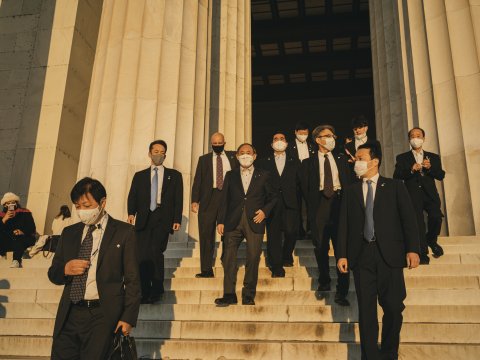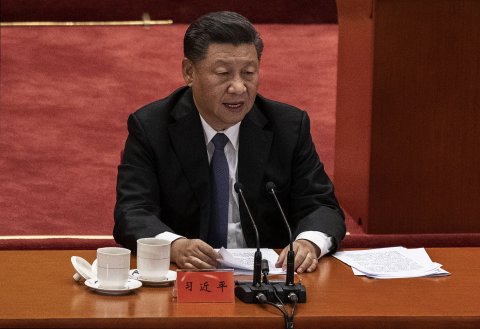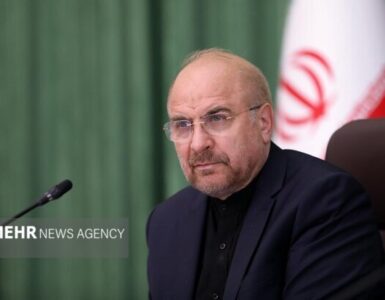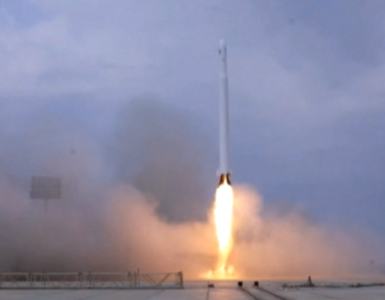
At sunrise on the day after his first face-to-face meeting with President Joe Biden, Japanese Prime Minister Yoshihide Suga set out on a walk to the National Mall and the Lincoln Memorial, several aides and a few photographers in tow, to take stock of his whirlwind visit to Washington D.C. and, perhaps, to remind the public at home that the strategic importance of the U.S.-Japan alliance had been restored.
During the Cold War, the decades-long stand-off between the United States and the Soviet Union, a former Japanese Prime Minister proudly described his country as “an unsinkable aircraft carrier” in the Pacific, one strategically located off the enemy’s coast. It was the threat of Soviet expansionism that made the post-World War II alliance between two former enemies the bedrock of U.S. security in east Asia. Without that threat, after the Soviet Union imploded, the alliance foundered. For a time, economic rivalry displaced strategic cooperation, and under Barack Obama, Japan pouted as the U.S. focused its attention on wooing Beijing.
That all changed in the past four years. Led by Donald Trump, the U.S. foreign policy establishment’s view of China changed dramatically. Beijing is now viewed as a strategic adversary, if not an outright enemy of the U.S. and its allies in east Asia. And that means Japan is back—in a big way. “The U.S.-Japan relationship is the most important alliance the United States has,” former National Security Adviser H.R. McMaster tells Newsweek. Countering China’s increasing clout in east Asia is impossible without Japan. “Even if seldom mentioned by name,” says Patrick Cronin, Asia Pacific Security Chair at the Hudson Institute, a Washington think tank, “China is the unmistakable fulcrum around which alliance policy on all issues turns.”
That fact was made plain by Japanese Prime Minister Yoshihide Suga’s arrival in Washington on April 16—the first foreign leader to meet President Joe Biden at the White House. He and Biden spent nearly three hours in talks, focusing heavily—though not exclusively—on the China challenge.
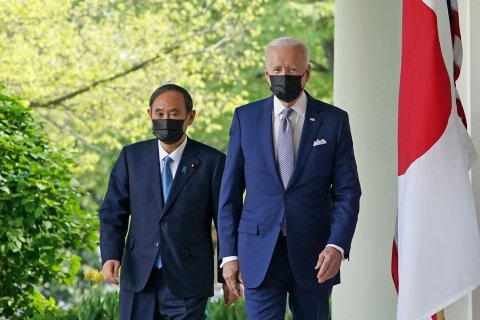
For decades, it has been diplomatic conventional wisdom that the U.S. and the United Kingdom shared a “special relationship,” closer even than Washington’s ties to Canada, Australia or Mexico. The reinvigoration of the US-Japan alliance, driven by shared interests in containing and competing with China, means the U.S.-U.K. is no longer Washington’s only special relationship. In an exclusive interview with Newsweek the day after his meetings at the White House, Suga avoided using the phrase “special relationship” (perhaps not wanting to step on U.K. Prime Minister Boris Johnson‘s toes) but straightforwardly acknowledged what the meeting meant. “It was evidence of the high level of importance that [President Biden] and the U.S. government attaches to Japan,” he said.
Suga is the prime minister now tasked with defining what that relationship will be. He succeeded Shinzo Abe (who served as prime minister for nine years in two separate stints) at a moment of mounting concern among U.S. allies about China’s evident—and increasing—contempt for established international rules laid out and maintained by the United States and its allies since the end of World War II. Twice in his interview with Newsweek, Suga used the word “severe” to describe the increasingly tense security environment in east Asia.
Unlike many prominent elected officials in Japan who come from dynastic political families, Suga had a humble upbringing. He was born to a strawberry farmer in northern Japan. He says in his first face-to-face meeting with Biden the two men bonded over the fact that both had relatively modest backgrounds “and then worked our way up to become politicians, and then leaders of our countries.” He was first elected to the Yokohama City Council in 1987, then to the Diet (Japan’s legislature) in 1996. There he befriended Abe, who when elected Prime Minister named Suga his Chief Cabinet Secretary. Suga served in that job for eight years, longer than anyone who had held the post previously, and succeeded Abe in September of last year.
Reshaping the U.S. Japan alliance for the 21st century will not be easy. Confronting the Soviet Union was child’s play compared to the challenges Beijing presents to the U.S. and its allies—Japan chief among them. While China does not yet have the military power Moscow once had, its huge economic clout complicates any containment strategy the West may contemplate, and gives Beijing a huge strategic card to play that the Soviet Union never had. The U.S. and Japan must compete with Beijing economically, deter it militarily in what both countries call the “Indo Pacific,” and figure out how to confront China for its egregious human rights abuses.
None of that will be easy. China today is Japan’s largest trading partner, having surpassed the U.S. in 2017. Tokyo’s economy is far more intertwined with Beijing’s than the U.S.’s is. Japan exported $141.2 billion of goods to China in 2020, accounting for 22 percent of its exports. The U.S. exported $124 billion to China: just seven percent of U.S. exports. Japan’s foreign direct investment into China in 2019 was $14.4 billion; U.S. foreign direct investment into China was just $7.5 billion. And though Abe, while prime minister, began to pay Japanese companies to move supply chains out of China, that program has had limited success so far. The country last year budgeted just over $500 million in subsidies targeting just 87 companies—relatively small numbers given Japan Inc.’s large presence in China.
Still, it’s an issue that both Biden and Suga pledged to work on. According to Masashi Adachi, a member of Japan’s parliament and a special adviser to Suga, in the wake of the COVID-19 pandemic, both the U.S. and Japan have come to recognize the importance of “supply chain resilience.” (In other words, ensuring that no single country dominates the production of any vital product, whether face masks in the midst of a pandemic or rare earth metals needed in the making of many high-tech goods.) They have “pledged to cooperate on supply chain issues in industries such as semiconductors and 5G [telecommunications networks],” Adachi tells Newsweek. That’s code for finding other alternative locations in the region as a way to reduce dependence on chip factories based in China.
“If some natural disaster or something happens—some unexpected event—then we have a serious problem, and that’s what happened [over the past year with COVID-19]. In that sense, we don’t say ‘China is a problem,’ but we have to consider what is the best portfolio for a smooth global supply chain,” Adachi says.

